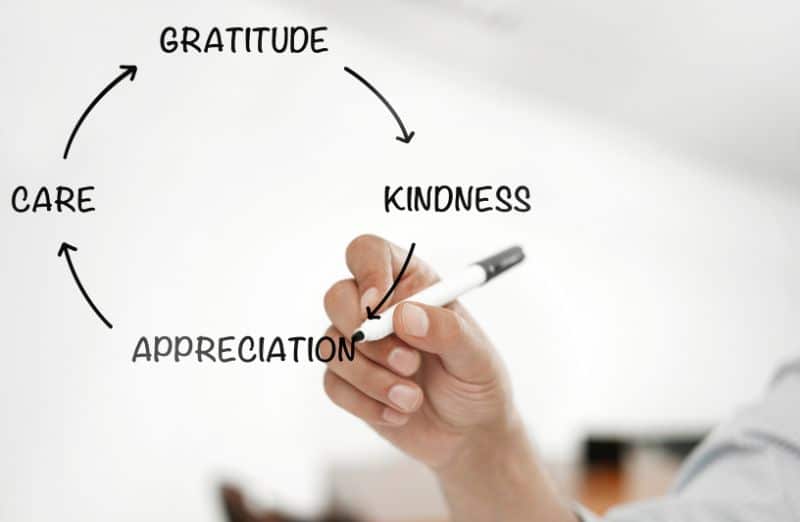Hybrid work has become the standard for modern companies, blending remote flexibility with in-office collaboration. While this shift has increased autonomy and broadened talent pools, it’s also challenged the way organizations maintain connection, culture, and camaraderie. In this dispersed landscape, recognition is no longer just a morale booster—it’s a foundational pillar for engagement and performance. Implementing actionable strategies to address recognition challenges in hybrid workplaces is crucial to creating a culture of appreciation.
When employees aren’t physically present, their efforts can become invisible. Recognition serves as a powerful bridge, closing the gap between presence and impact. And when done right, it strengthens bonds, reinforces company values, and keeps motivation high—even across screens and time zones. Emphasizing best practices in establishing effective recognition programs ensures that recognition is meaningful and reaches all employees.
Elevating Employee Recognition Programs for Maximum Impact
Employee recognition programs are a cornerstone of any successful HR strategy. These programs are designed to acknowledge and reward employees for their hard work, dedication, and contributions to the company. A well-crafted employee recognition program can significantly boost employee motivation, engagement, and retention, while also enhancing overall job satisfaction.
There are various types of employee recognition programs, each serving a unique purpose. Formal recognition programs, such as annual awards ceremonies or quarterly recognition events, provide a structured way to celebrate employee achievements. Informal recognition programs, on the other hand, involve spontaneous acts of appreciation, like a manager thanking an employee for their hard work on the spot.
Peer-to-peer recognition programs empower employees to recognize and reward their colleagues, fostering a sense of teamwork and camaraderie. Public recognition programs, which highlight employee achievements in company-wide meetings or on social media, can amplify the impact of recognition by making it visible to the entire organization.
By implementing a diverse range of recognition programs, companies can ensure that all employees feel valued and appreciated, ultimately boosting morale and fostering a positive workplace culture.
Employee Appreciation and Gratitude
Employee appreciation and gratitude are vital components of any effective employee recognition program. Showing appreciation and gratitude to employees can significantly enhance their morale, motivation, and job satisfaction, while also contributing to a positive and supportive work environment.
There are numerous ways to express appreciation and gratitude to employees. Verbal recognition, such as a simple “thank you” for a job well done, can go a long way in making employees feel valued. Written recognition, like a heartfelt thank-you note or email, provides a tangible reminder of appreciation that employees can revisit. Rewards, including bonuses, gift cards, or other incentives, offer a more tangible form of recognition that can further motivate employees.

Timeliness and specificity are crucial when showing appreciation and gratitude. Recognizing employees as soon as possible after they have made a significant contribution or achieved a milestone ensures that the recognition feels genuine and impactful. Being specific about what the employee did and how it contributed to the company’s success further reinforces the value of their efforts.
By consistently showing appreciation and gratitude, companies can create a culture of recognition that enhances employee motivation and job satisfaction.
The Impact of Employee Recognition on Employee Experience
Employee recognition has a profound impact on the overall employee experience. When employees feel recognized and valued, they are more likely to be engaged, motivated, and satisfied with their jobs. This positive employee experience translates into higher productivity, efficiency, and quality of work.
Conversely, when employees do not feel recognized or valued, they may become disengaged, demotivated, and dissatisfied with their jobs. This can lead to decreased productivity, lower quality of work, and ultimately, higher employee turnover.
Recognition also plays a critical role in employee retention. Employees who feel recognized and valued are more likely to stay with the company long-term. They are also more likely to recommend the company to others and provide positive feedback about their workplace.
By prioritizing employee recognition, companies can enhance the overall employee experience, leading to a more engaged, motivated, and loyal workforce.
The Role of Leadership in Employee Recognition
Leadership plays a pivotal role in fostering a culture of employee recognition. Leaders set the tone for the company’s culture and values, and their actions and attitudes towards recognition can significantly influence how employees feel about their contributions.
Leaders can demonstrate their commitment to employee recognition by making it a priority in their daily interactions with employees. This includes acknowledging and celebrating employee achievements publicly, providing timely and specific feedback, and encouraging managers and supervisors to do the same.
Establishing clear expectations and guidelines for employee recognition is also essential. Leaders should provide training and resources to help managers and supervisors recognize employees effectively. This ensures that recognition is consistent, meaningful, and aligned with the company’s core values.
By modeling the behavior they expect from others, leaders can create a culture where recognition is an integral part of the workplace. This not only helps employees feel valued and appreciated but also enhances overall employee engagement and satisfaction.
By following this plan, the new sections will seamlessly integrate into the existing article, maintaining the same tone and style while effectively conveying the importance of employee recognition in hybrid workplaces.
Embracing the Hybrid Work Revolution: Navigating the New Normal

Before the pandemic, few organizations operated with hybrid flexibility. Now, hybrid work is a default setting for many, blending office-based schedules with remote workdays. This shift has led to incredible gains in productivity and work-life balance—but also a silent erosion of workplace rituals, especially those built around visibility and acknowledgment.
In traditional office settings, recognition often happened organically. But in today’s hybrid model, where hybrid arrangements are common, there’s a growing need to deliberately engineer visibility and appreciation. Without intentionality, high-performing employees risk going unrecognized—and unmotivated.
Why Recognition Was Easier in the Office
Back when everyone shared the same space, it was easy to give and receive praise. A quick “nice work!” as you passed a colleague’s desk, a team clap after a presentation, or a celebratory lunch for closing a deal were all built-in feedback loops that fostered a sense of connection. In-person recognition events, such as conferences or meetings, also played a crucial role in boosting employee self-esteem and productivity.
In the hybrid era, these micro-moments are fewer and harder to replicate. Without the watercooler, spontaneous compliments vanish. That’s why recognition today must be intentional, structured, and tech-enabled to recreate that sense of shared success.
Navigating Hybrid Work Challenges: Turning Obstacles into Opportunities
Distributed teams face challenges that go beyond technology and timezone coordination. One of the most significant hurdles is maintaining team cohesion when employees aren’t regularly in the same room. Visibility becomes blurred. Contributions go unnoticed. And employees begin to feel like they’re working in a silo.
Without proactive recognition strategies, this detachment can spiral into disengagement, especially for remote employees. Companies that fail to adapt their recognition practices for hybrid work risk losing their cultural glue.
The Emotional Cost of Being Overlooked
Human beings are wired for recognition. When efforts go unnoticed, especially repeatedly, the emotional toll on employee morale is profound. Hybrid and remote workers are especially susceptible to feeling invisible, particularly when praise is given in-office and forgotten for those who aren’t physically present.
This sense of being overlooked can lead to feelings of isolation, decreased motivation, and ultimately, higher turnover. If left unchecked, it fosters a culture where only the loudest or most visible are appreciated—leaving quieter, equally impactful contributors in the shadows.
Recognition as a Core Human Need
From Maslow’s hierarchy to modern behavioral studies, we know one truth stands firm: recognition fuels motivation. At work, recognition validates effort. It tells an employee, “You matter. What you do is seen. You are valued.”

In hybrid environments, where face-to-face validation is rare, fulfilling this psychological need becomes even more essential. Meaningful recognition addresses fundamental human needs for appreciation and belonging, particularly among younger workers who increasingly desire acknowledgment of their unique contributions in addition to traditional monetary compensation. Recognition is the currency of human connection—and in distributed settings, it’s often the strongest form of engagement available.
Recognition vs Rewards: What’s the Difference?
Let’s clear up the confusion. Recognition is emotional; rewards are transactional.
- Recognition is a Slack shoutout, a leaderboard highlight, or a heartfelt “thank you.” Recognition serves as a powerful tool to reinforce company values and motivate employees by acknowledging their contributions in a meaningful way. It fosters a culture of appreciation and strengthens team relationships, making employees feel valued and appreciated for their efforts. A handwritten note can also be a form of recognition, providing a personal touch that strengthens the bond between employees and managers.
- Rewards are bonuses, gift cards, or perks tied to performance. While rewards provide tangible incentives for achieving specific goals, they often lack the personal touch that recognition offers. Rewards can drive short-term performance but may not necessarily contribute to long-term employee engagement and satisfaction.
While rewards are valuable, recognition offers immediate, meaningful impact—and it costs far less. Hybrid workplaces benefit from frequent, low-lift recognition because it’s scalable, inclusive, and highly effective. By integrating recognition into everyday interactions, companies can boost morale, enhance employee motivation, and create a strong sense of belonging among team members. This approach not only supports hybrid work success but also contributes to a positive workplace culture where employees feel recognized and motivated to excel.
Why Recognition Drives Performance
Recognition doesn’t just make people feel good—it leads to increased productivity and makes them do better. When employees are acknowledged for their efforts, several positive outcomes emerge that extend beyond just the immediate feel-good factor:
- Enhanced Confidence: Employees gain a boost in self-esteem and assurance in their abilities, empowering them to take on more challenging tasks and innovate without fear of failure.
- Repetition of Successful Behaviors: Recognized employees are more likely to continue performing at a high level, as the acknowledgment reinforces the value of their contributions and encourages them to repeat the behaviors that led to recognition.
- Increased Engagement and Commitment: Recognition fosters a deeper connection to the organization, making employees more invested in their work and committed to the company’s goals and values.
- Positive Influence on Team Dynamics: When recognition is shared, it creates a ripple effect, inspiring other team members to strive for excellence and fostering a culture of mutual respect and support.
In hybrid teams, where direct supervision is limited, recognition becomes a performance amplifier. It reinforces positive actions, encourages consistency, and aligns individual effort with team goals. By integrating recognition into the daily workflow, organizations can ensure that employees feel valued and motivated, regardless of their physical location, leading to a more cohesive and high-performing team.
Compelling Stats That Demonstrate Recognition’s Power
Numbers don’t lie. According to Gallup, employees who feel recognized are:
- 5x more likely to be engaged
- 4x more likely to stay at their job
- 73% less likely to feel burned out
In hybrid workplaces, where burnout and disengagement run high, these stats underscore recognition’s role as a retention and engagement tool. But why does recognition have such a direct impact on employee engagement and retention? When employees receive recognition, they experience a boost in morale and motivation, which translates into increased job satisfaction and a stronger commitment to their roles. This sense of being valued fosters loyalty, reducing the likelihood of turnover and enhancing the overall employee experience.
Real-Time Recognition in Hybrid Environments

Time dilutes impact. That’s why recognition needs to be instantaneous, especially in hybrid setups where many employees are working remotely. When someone performs well—whether it’s a killer pitch, solving a customer issue, or supporting a teammate—acknowledging them in the moment enhances the effect.
Digital platforms like Spinify enable real-time recognition, displaying wins on leaderboards, Slack, or screens. This immediacy keeps momentum alive and shows that great work doesn’t go unnoticed—even when it’s remote.
Peer-to-Peer Recognition in Distributed Teams
Recognition shouldn’t always come top-down. In hybrid teams, peer appreciation and peer-to-peer praise play a crucial role in fostering deeper relationships, enhancing accountability, and building trust among team members. By enabling teammates to recognize each other, companies can effectively break down silos, highlight collaboration, and democratize appreciation. This approach encourages a culture where everyone feels valued and appreciated, regardless of their role or location.
When recognition is everyone’s responsibility, it becomes an integral part of the company’s daily rhythm. This inclusive practice not only boosts morale but also aligns with the company’s core values, ensuring that recognition is a shared and celebrated aspect of workplace culture.
Manager Visibility and Blind Spots
Out of sight, out of mind? Not anymore. Managers in hybrid environments risk losing sight of quiet contributors or those not in their timezone. This creates recognition bias, where only vocal or visible team members get acknowledged.
With tools like Spinify, managers gain data-driven visibility—seeing activity, progress, and engagement across locations—ensuring no one falls through the cracks. Additionally, incorporating employee feedback into these tools can further enhance recognition programs by allowing regular evaluations and adjustments based on employee input and observed outcomes.
How Lack of Recognition Affects Retention
Unrecognized employees become disengaged employees. Employees who received recognition, on the other hand, are significantly more likely to stay engaged, perceive promotions as fair, contribute to innovation, and demonstrate extra effort. And disengaged employees?
- Perform below their potential
- Stop participating in team culture
- Leave for companies where they feel seen
In a hybrid setting, this happens faster. Employees who don’t feel acknowledged often assume they’re forgotten—and start checking out emotionally long before they resign.
Fostering Inclusion Through the Power of Recognition
Recognition isn’t just motivational—it’s transformative for inclusion. In hybrid workplaces, where diversity and distance can create barriers, recognition ensures equal opportunities for every voice to be heard, every effort to be acknowledged, and every team member to feel they belong. It highlights non-traditional contributions like emotional intelligence, problem-solving, or mentorship, which might otherwise go unnoticed.
By valuing these diverse contributions, companies foster a culture of inclusion and appreciation, where all employees feel valued and empowered. This inclusive approach not only strengthens team cohesion but also enhances employee engagement, leading to a more innovative and collaborative work environment.
Celebrating Small Wins Virtually
Not every milestone is massive—but every win deserves a moment. Celebrating small victories, such as finishing a project ahead of schedule or assisting a colleague with a challenge, reinforces positive behaviors, boosts morale, and encourages extra effort. These achievements, often overlooked in remote setups, play a crucial role in maintaining motivation and engagement.

Tools like Spinify make recognizing these small wins habitual, ensuring they don’t fly under the radar. By integrating recognition into daily workflows, companies can create a culture of appreciation that transcends physical distances, fostering a strong sense of community and shared success among team members.
Tools That Make Recognition Easy
Recognition should be simple to give, publicly visible, and seamlessly integrated into your workflow. This is crucial in hybrid workplaces where physical proximity is limited, and spontaneous acknowledgment is rare. By making recognition effortless and impactful, companies can ensure that employees feel valued and appreciated, regardless of their location.
Spinify excels in this area, offering automatic triggers from CRMs or project tools for real-time shoutouts and visual leaderboards. These features not only simplify the recognition process but also amplify its impact, fostering a culture of appreciation that transcends physical boundaries and enhances overall employee engagement through effective recognition efforts.
Amplifying Team Spirit with Public Recognition
A quiet “thank you” is great. But a public shoutout? Game-changing. Public recognition is a powerful tool in hybrid workplaces, as it not only validates the recipient but also inspires the entire team. When appreciation is shared openly, it reinforces company values and fosters a sense of unity among team members, regardless of their physical location.
In hybrid environments, where remote and in-office employees coexist, public praise delivered via screens, dashboards, or communication platforms like Slack, creates shared experiences that bridge the gap of physical distance. This approach ensures that every team member feels valued and connected, enhancing overall employee engagement and morale.
Creating a Culture of Appreciation
Recognition isn’t just a perk; it’s a fundamental part of company culture. To make recognition an integral part of your organization, start by embedding it into the onboarding process to emphasize its importance from day one. Highlight achievements and reinforce the company’s core values during team meetings. Encourage all levels of staff to recognize peers, fostering an environment where everyone feels empowered to acknowledge contributions.
Culture is defined by what you celebrate. In hybrid teams, a digital-first approach is essential. Use digital platforms to ensure recognition is visible and accessible, bridging the gap between remote and in-office employees. By cultivating a culture of appreciation, organizations enhance employee engagement, boost morale, and foster a strong sense of belonging, ultimately driving performance and satisfaction.
Gamifying Recognition: Energize Your Hybrid Workforce
Gamification transforms recognition into an engaging and motivating experience for employees, making it a key driver of motivating employees and overall employee engagement. By awarding points for kudos and unlocking badges for milestones, companies can foster a sense of achievement and friendly competition among team members. Displaying rankings encourages participation and keeps employees motivated to excel, reinforcing desired behaviors and aligning with company values.
Spinify enables organizations to turn appreciation into powerful engagement engines, making recognition both rewarding and addictive in the most positive way. By integrating gamification into recognition programs, companies can boost morale, strengthen workplace culture, and ensure employees feel valued and appreciated for their contributions.
Tailoring Recognition: Customize for Team Success
Sales teams thrive on the excitement of leaderboards, where their achievements are publicly celebrated and drive healthy competition. Developers, on the other hand, might appreciate the quiet acknowledgment of private praise or the flexibility of asynchronous shoutouts that respect their focused work style. Customizing recognition methods ensures that each team feels valued in a way that resonates with them.
Understanding team preferences, personality types, and cultural nuances is crucial for effective recognition and encouraging new ideas. In hybrid, diverse teams, a one-size-fits-all approach doesn’t work. Tailoring recognition strategies fosters inclusivity and ensures that every employee feels appreciated, regardless of their role or location.
Recognizing Remote and In-Office Equally
In hybrid settings, proximity bias can lead to in-office workers receiving more recognition and opportunities, eroding trust and equality among team members. To combat this, recognition must be consistently distributed across all work locations, whether employees work remotely or in the office.
Digital platforms facilitate this by promoting visibility through dashboards and tracking recognition frequency across locations, ensuring fairness. This approach fosters an inclusive culture where every employee feels valued, regardless of their physical presence in the office.
Integrating Recognition Into Daily Rituals
Recognition should seamlessly integrate into your daily rhythm, becoming a natural part of your workplace culture. Incorporating private recognition, such as through personal conversations, emails, or handwritten notes, alongside routine activities like standups, check-ins, retrospectives, and onboarding, ensures consistent acknowledgment of achievements, fostering a culture of appreciation.
By making recognition a fundamental aspect of your operations, you cultivate an environment where employees feel valued. This integration promotes a sense of belonging and motivates employees to contribute positively to the organization.
Spinify’s Role in Recognition Success
Spinify transforms performance metrics into recognition moments with unparalleled immediacy. By harnessing real-time data from CRMs, it ensures that daily achievements and contributions are instantly visible across teams, fostering a culture of appreciation and engagement. Features like live leaderboards, peer-to-peer badges, and auto-celebrations of milestones create a dynamic environment where recognition is both public and personalized.
For hybrid teams, Spinify acts as the ultimate visibility layer, seamlessly integrating recognition into daily workflows. Its recognition dashboards, synced with productivity tools, provide a comprehensive view of team successes, ensuring that no achievement goes unnoticed, regardless of location. Spinify embodies the traits of a successful employee recognition program by evolving traditional methods into a more comprehensive and strategic approach, leveraging technology to enhance recognition and drive engagement.
How Recognition Connects People to Purpose
Recognition isn’t just about praise—it’s about meaning. It answers the human question: “Does what I do matter?”
Employees expect to be acknowledged for their impact—not just output—which helps them connect deeply to your mission. And that’s what makes them stay, grow, and lead.
Recognition Is Your Hybrid Culture Pillar
Hybrid work isn’t just about where people work. It’s about how they feel when they do. And without intentional recognition and appreciation, even high performers can feel like ghosts in the machine.
Make recognition visible, frequent, inclusive, and authentic.
Spinify is your partner in building a recognition-rich culture that transcends distance, boosts performance, and strengthens team unity.
🎯 Ready to level up recognition across your hybrid workforce? Book a Free Demo Today and see how Spinify turns appreciation into engagement.




